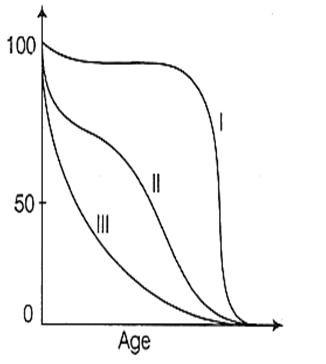 Multiple Choice Questions
Multiple Choice QuestionsWhich of the following are not the functions of genes?
I. Cell division
II. Structure and metabolism control
III. Carrier of hereditary information
IV. Provide proof for crossing over
I, II, III and IV
I, III and IV
I, II and III
II, III and IV
C.
I, II and III
Gene fucntions are as follows:
(i) Genes are the units of inheritance
(ii) They control the morphology and physiology of individuals.
(iii) Their replication is essential for cell division.
(iv) Reshuffling of genes during sexual reproduction produces variations.
Consider the following statements given below.
I. First living form originated from semi-arid land.
II. Nucleic acid were the first sign of life and represented beginning of life.
III. It was strongly beleived that prokaryotes evolved to from eukaryotes.
Choose the correct option
I and II
II and III
Only III
I, II and III
The sequence given below 5'-GGCC-3' is recognition sequence for which of the following enzyme
Not 1
Eco R1
Hae III
Puv I
Cryptorchidism in males is
male sterility due to prostate
enlargement of prostate gland
inguinal hernea
hidden testis
Paul berg's gene splicing experiment created the first rDNA molecule, which was a
T4 phage fragment incorporated into SV40 vector
Lambda phage fragment incorporated into SV40 vector
T4 phage fragment incorporated into pSC 101 vector
Lambda phage fragment incorporated into pSC 101 vector
Which of the following is the best suited method for the production of virus free plants?
embryo culture
meristem culture
ovule culture
anther culture
Guillain Base syndrome is an autoimmune disease in humans. In this disease, antibodies are produced against.
TSH receptor on thyroid cells
Pancreatic beta cell antigen
Acetylcholine receptor of motor endplate
Myelin of peripheral nerves
Where does hyaline cartilage occur in an embryo?
Entire skeleton of the embryo
surface of bones at joints
pinna of the outer ear and in epiglottis
intervertebral discs of the spinal column
Read the following statements.
I. Satellite DNA is found in the region of euchromatin
II. Prokaryotes contain only non-repetitive DNA
Identify wheather the given statements are true or false
Both the statements are true
I is true and II is false
I is false and II is true
Both the statements are false
Given below is the survivorship curve of different population.

Which type of the curve has the highest chances of senescence affecting mortality?
Type I
Type I and II
Type III
Type I, II and III
